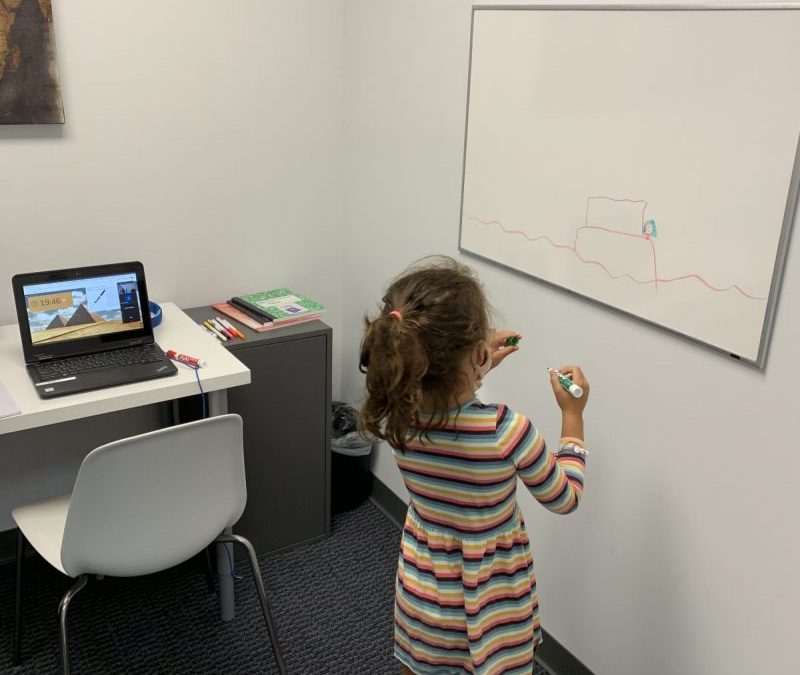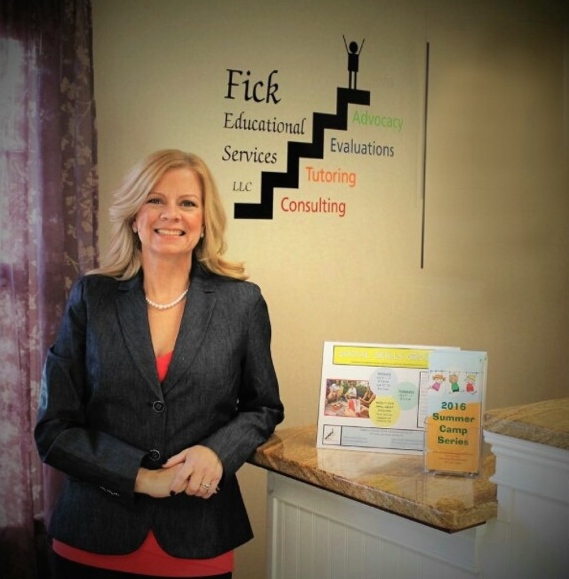This is the second post in a three-part series on what to do before, during, and after an IEP meeting. This covers the what to do during an IEP meeting. We will soon share tips for what to do after IEP meetings.
You’ve done the work preparing for an IEP meeting. You feel ready, but the moment you walk into the room for the meeting, you freeze! The planning evaporates from your mind, emotions build up remembering the struggles your child faced in school, and you see faces you don’t recognize. What do you do?
The good news, especially if you’ve read our post on what to do before an IEP, is that you have done the prep work! Now is the time to shine. It’s not reasonable to expect an IEP meeting to go exactly as you expect, but if you remember FICK during the meeting, you will find the meeting to be fruitful for everyone involved.
Our FICK IEP meeting guide:
F – Feel Your Feelings.
When under pressure, many of us tend to fall into or pull away from our feelings. This can lead to leaving reason at the door or lowering our expectations from an IEP meetings. Our recommendation is to allow yourself to feel your feelings and recognize them in the moment. No one is more invested in your child’s life than you. I’ve seen parents cry countless times during IEP meetings, and there is not a single time you should regret those tears! Sometimes we need to be angry, upset or exhausted to accurately express our needs.
The key when you’re feeling these feelings is to explain your emotions. Once those tears have been blotted by a tissue, make sure to rationalize why you needed to cry. It’s not easy, but that emotion is only beneficial when the meaning is made clear to everyone in the room. On the flip side, if you find yourself angry and talk through the reason with everyone in attendance, you may end up finding that the people in the room have had no role in creating that anger. You may find that you were angry at the staff at your child’s previous school that did not properly identify a learning disorder. If your emotion doesn’t help your child get their best, appropriate education, just feel it and move on.
On the converse, we want everyone in the room to feel your feelings, and that means the parent sometimes does need to listen and recognize what the educators are saying and feeling. Teachers may be frustrated on behalf of your child, and likely want what’s best for them. In truly recognizing each other and listening, we can make more progress and agree to the best path to getting your child the resources they need. After working those emotions out, it becomes so much easier and more comfortable to move forward!
I – Include your Child
First, we don’t mean that they necessarily should be there during the entire IEP. However, in most cases there is a benefit to including your child during at least a portion of the the IEP meeting. Like our previous point, your child will undoubtedly have emotional and rational insight into their education experience. Even very young children are capable of explaining what frustrates them and confuses them in the classroom. You may pull valuable information from your child that otherwise may have gone unknown.
The other major reason to include a child is to get them into the practice of self-advocating. This is one of the most important skills any child can learn. If present during an IEP meeting, it’s worthwhile to clarify with your child how the details of the IEP affect them. For instance, if your child is guaranteed extra time to take tests, it is crucial they know that and feel empowered to advocate for themselves in the classroom.
The goal should always be to build advocacy skills with your child and increase the levels of comfort they have with accommodations and goals outlined in their IEP. Put simply, elementary and secondary students will benefit from being a part of that decision, and parents and teachers should be glad knowing that their input was considered in the IEP. Nothing makes teachers understand how important an IEP quite like seeing the person it will be affecting most!
C – Compromise
lt’s not always fun, but sometimes it needs to be done. If everyone walks into the IEP meeting refusing to accept anything than their own ideas of what is best for the IEP, no one will leave with what they wanted. Worse yet, refusing to compromise will pull focus away from what is truly best for your child. A little bit of compromising allows you to build respect and get more progress from your meeting. I recommend going into the meeting knowing what your ‘must haves’, ‘would like’, and ‘okay without’ points are in the IEP. We would never recommend compromising on the ‘must haves’ for your child, but being open to alternatives is the key.
Compromising builds a great rapport with educators and administrators. Being able to compromise shows that you can respect their professional opinions and listen to their capabilities and needs, and will make it easier for them to compromise themselves!
In an IEP meeting, not every idea is going to be accepted, and that’s okay. It’s better to listen, tease out, then reject an idea after that review than to immediately dismiss it. We always want the best results for our children, and we want them immediately, but an IEP is also an annual plan. As such, view it as a step towards the goal of your child graduating school and transitioning to their independence. (Yes, even if the child is in elementary school!) Compromise helps us build the steps to complete that journey successfully. In this vein, remember that a key aspect of compromise can be to revisit decisions, either in an upcoming IEP or perhaps more frequently, even.
K – Keep on the Agenda
If you did the work laid out in our last blog, then you have a great agenda set for this meeting. Keep to it! First, this will give you a great anchor during moments in which you are feeling your feelings and need a way to return to the goal of improving your child’s educational experience. Sticking to the agenda also means you won’t forget any of the paperwork prepared for the meeting; everything you spent time organizing and identifying worth sharing deserves to be included.
As a general rule, we have a set of steps that we recommend for IEP meetings. You can of course adapt and adjust to fit your meeting’s structure, but during the meeting make sure to:
- Share any and all parental concerns you have. If it never gets discussed, it can never get addressed.
- Address and dissect goals. These are the guideposts of the IEP and cannot be overlooked. If the goals aren’t solid, the plan to achieve them is never going to be useful.
- Get input from everyone at key junctures. Have teachers and administrators weigh in on things like goals and accommodations. Have your child weigh in on goals and accommodations. If you have an advocate with you, have them weigh in on goals and accommodations. Make sure to get the most out of everyone in the room.
Hopefully those three key stages of the meeting will help keep the focus and productivity high. During this process, it’s important to never skip any steps! Don’t move on to your next agenda point until you feel that it has been addressed adequately. If you feel concerned at any point, let it be known immediately.
When it comes time to end the meeting, ask any questions you may have. This cold be about points on the agenda on which you want more clarification, or can be questions focused on the next steps once the meeting ends. After all, an IEP meeting really marks the beginning of an agreement on how best to educate your child. There will be questions, and you should never feel shy in asking them.
Remembering FICK is key! Now that you’ve Felt your Feelings, Included your child, Compromised when appropriate, and Kept on the agenda, you should have a solid IEP for the year ahead. Keep in mind that not evey IEP situation is identical, and you may find that the issues raised during the meeting need to be revisited. Above all, the goal of the IEP meeting should be leaving the room feeling assured that everyone is on the same page in securing the best education for your child.
Part three in the series will focus on what to do after an IEP meeting for the highest success possible. If you have questions about your specific IEP situation, call or email us anytime: fickeducation@gmail.com or (610)457-2199.

 Fick Educational Services is devoted to the educational needs of the children through individualized learning plans, tutoring and advocacy.
Fick Educational Services is devoted to the educational needs of the children through individualized learning plans, tutoring and advocacy.

